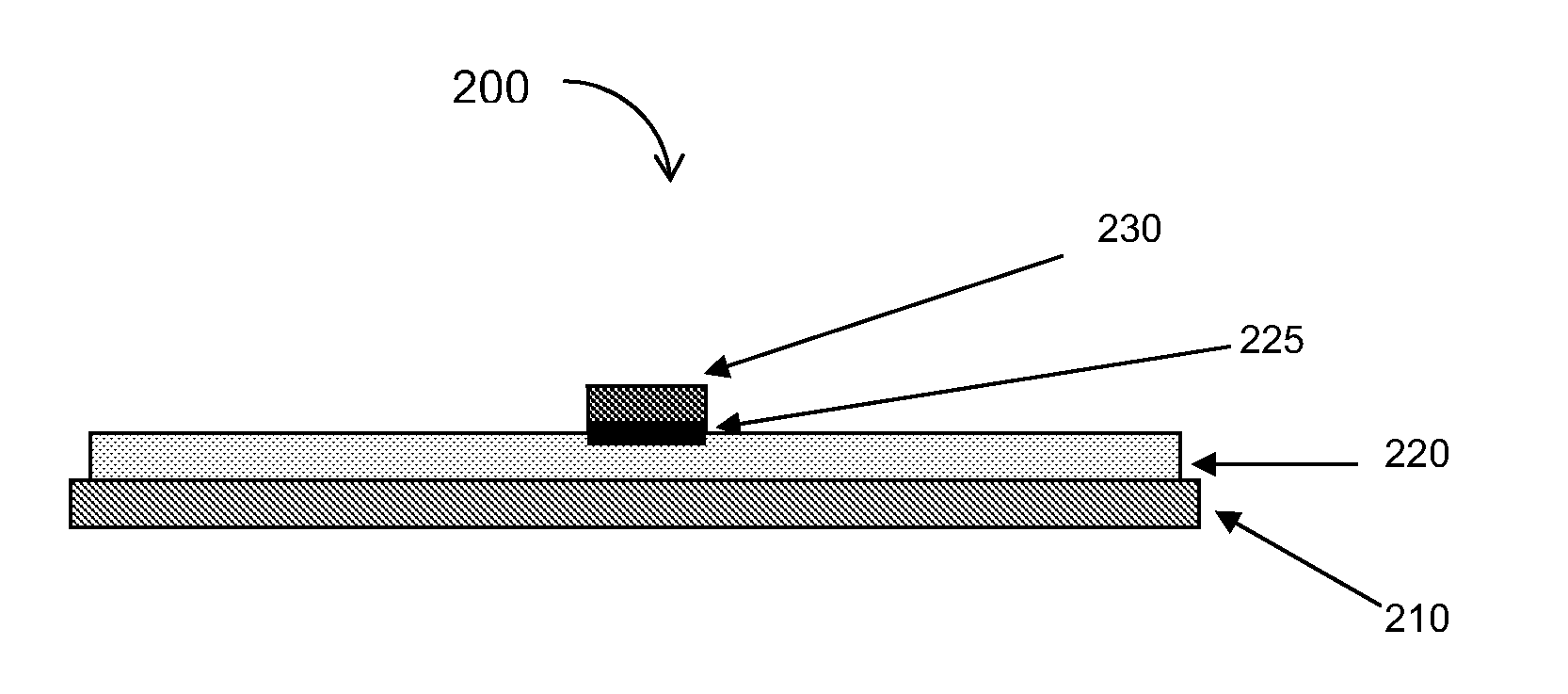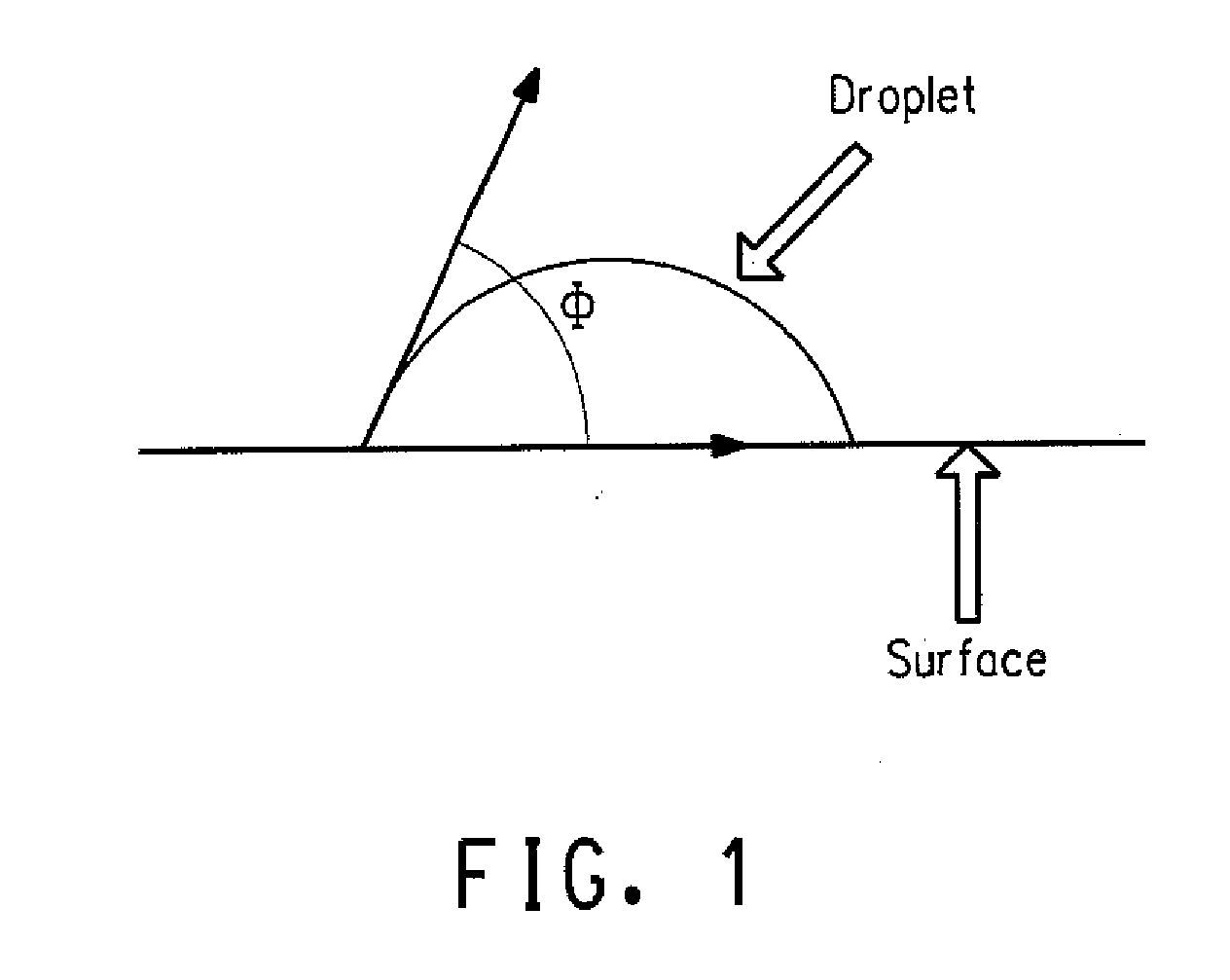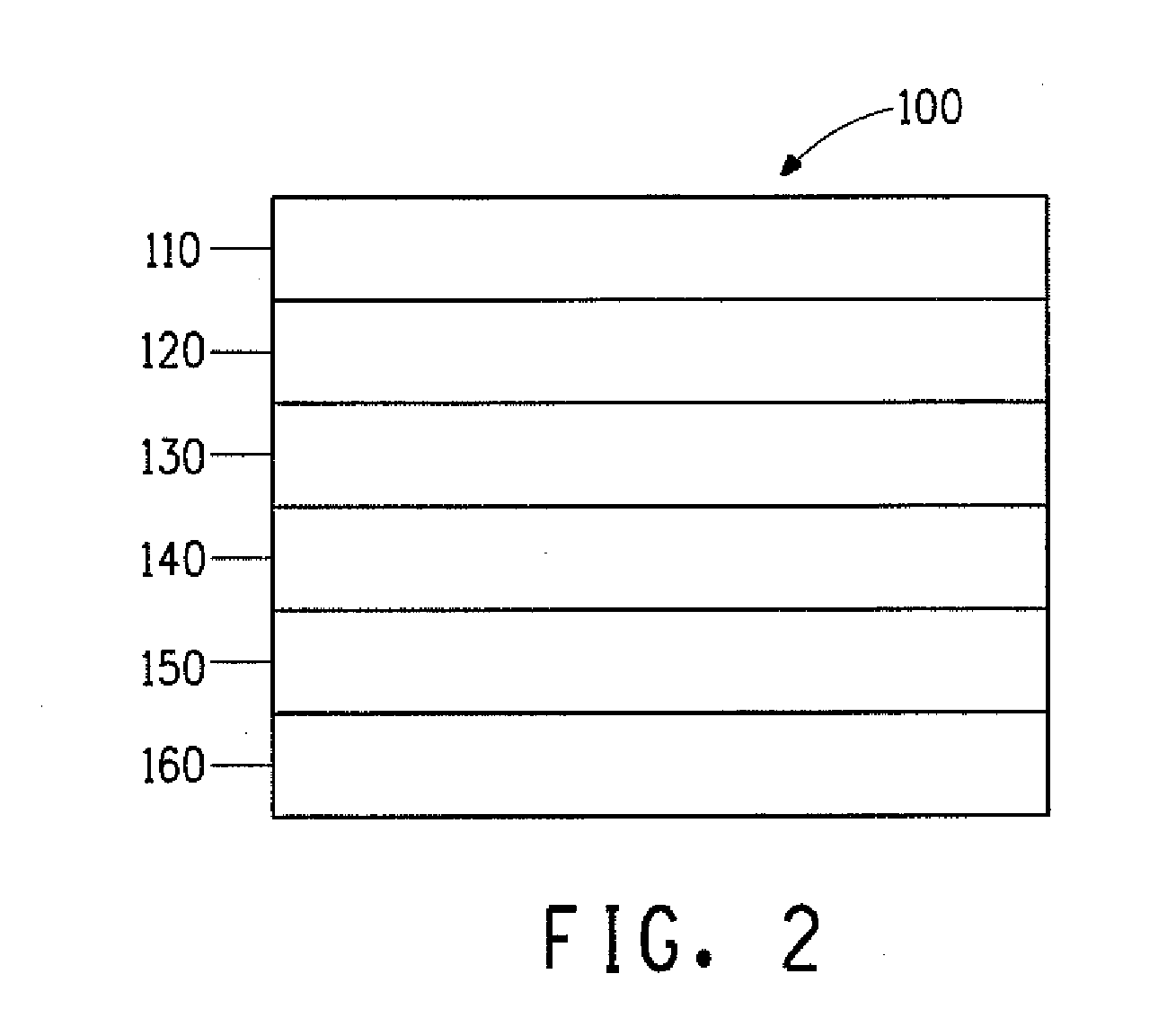Process and materials for making contained layers and devices made with same
a technology of containment layer and process, applied in the direction of thermoelectric devices, chemical instruments and processes, coatings, etc., can solve the problems of reducing the available emissive area of the pixel, affecting the quality of practical containment structures, and requiring certain modifications to achieve full-color displays.
- Summary
- Abstract
- Description
- Claims
- Application Information
AI Technical Summary
Benefits of technology
Problems solved by technology
Method used
Image
Examples
examples
[0162]The concepts described herein will be further described in the following examples, which do not limit the scope of the invention described in the claims.
[0163]In the examples, the following priming materials were used:
[0164]PM-8 through PM-12 are well known compounds. The preparation compound such as PM-1 and PM-4 has been previously described in published PCT application WO 2009 / 067419. The preparation of compounds such as PM-2, PM-3, and PM-6 has been described in published PCT applications WO 2008 / 024378 and WO 2008 / 024379. The preparation of compounds such as PM-7 has been described in published US patent application 2005-0187411.
[0165]Deuterated priming material PM-13 can be prepared as follows.
Synthesis of Compound 2
[0166]
[0167]Under an atmosphere of nitrogen, a 250 mL round bottom was charged with 9,9-dioctyl-2,7-dibromofluorene (25.0 g, 45.58 mmol), phenylboronic acid (12.23 g, 100.28 mmol), Pd2(dba)3 (0.42 g, 0.46 mmol), PtBu3 (0.22 g, 1.09 mmol) and 100 mL toluene. T...
examples 1-10
[0179]These examples illustrate different priming materials and the resulting change in contact angle, where the priming layer is formed by liquid deposition and developed by treatment with a liquid.
[0180]Test coupons were prepared by spin-coating an aqueous dispersion of HIJ-1 or HIJ-2 onto a glass substrate to a thickness of 50 nm. After drying this layer, a priming layer was formed by spin coating a solution of the priming material onto the dried HIJ layer. In Examples 1-8 and 10, the priming material was spin coated from toluene. In Example 9, the priming material was spin coated from dichloromethane. After drying, the priming layer was exposed to radiation in a pattern. In Examples 1-6 and 8-9, the exposure was at 248 nm with a dosage of 100 mJ / cm2. In Example 7, the exposure dosage was 200 mJ / cm2. In Example 10, there were multiple exposures: 248 nm (1 J / cm2), 365 nm (13 J / cm2), 405 nm (3 J / cm2), and 436 nm (8 J / cm2). After exposure, the priming layer was developed by treatmen...
examples 11-12
[0181]These examples illustrate different priming materials and the resulting change in contact angle, where the priming layer is formed by vapor deposition and developed by heating.
[0182]The test coupons were prepared by depositing HIJ-1 onto a glass substrate as described above. The priming layer was then formed by vapor depositing the priming material in a thermal evaporator. The priming layer was then exposed and developed by baking. In Example 11, the exposure was at 248 nm with a dosage of 400 mJ / cm2. The coupon was developed by baking at 225° C. for 5 minutes. In Example 12, there were multiple exposures: 248 nm (1 J / cm2), 365 nm (13 J / cm2), 405 nm (3 J / cm2), and 436 nm (8 J / cm2). The coupon was developed by baking at 275° C. for 5 minutes. A summary of the materials and results is given in Table 2.
TABLE 2Test Coupon ResultsContact Angle withPrimingMethyl BenzoateExampleLayerExposedUnexposed11PM-1153°12PM-1220°56°
PUM
 Login to View More
Login to View More Abstract
Description
Claims
Application Information
 Login to View More
Login to View More - R&D
- Intellectual Property
- Life Sciences
- Materials
- Tech Scout
- Unparalleled Data Quality
- Higher Quality Content
- 60% Fewer Hallucinations
Browse by: Latest US Patents, China's latest patents, Technical Efficacy Thesaurus, Application Domain, Technology Topic, Popular Technical Reports.
© 2025 PatSnap. All rights reserved.Legal|Privacy policy|Modern Slavery Act Transparency Statement|Sitemap|About US| Contact US: help@patsnap.com



